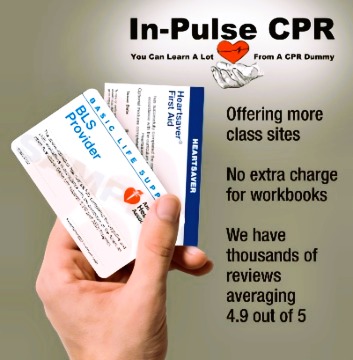Trained in CPR
You’re never too young to have a heart attack – or too young to save the life of someone who’s had one. Beth Scroggs was only 52 and in good health, riding San Francisco BART commuter train, when suddenly she slumped over in her seat, unconscious. Ms. Scroggs had suffered a cardiac arrest, the leading cause of natural death in the United States. But Beth Scroggs didn’t die.
Regaining consciousness in a hospital several days later, Ms. Scroggs learned that her life had been saved by a fellow passenger, a girl 15 years old! While other bystanders stood by helplessly, young Sara Broski immediately began chest compressions on the unconscious woman. She’d only learned CPR a few weeks earlier.
Sadly, most heart attack victims die before receiving medical attention. But their chances of successful recovery increase exponentially if CPR is begun quickly by a trained bystander. The operative word is quickly. The chance of death from cardiac arrest increases up to ten percent for every minute that passes before CPR is begun. What’s more, the victim begins to suffer brain damage from lack of oxygenated blood in just a very few minutes.
Learning CPR is easy with proper training, which takes very little time. Compare that modest expenditure of time with the extra years someone like Beth Scroggs has been granted to spend with her family and friends – time which, without the effort of young Sara Broski, would have been denied to her and lost to them. No price can be put on such a commodity.
There really is no excuse for not learning CPR. If you think you have one, like you’re too busy or can’t be bothered, think again. Think of Beth Scroggs, alive today through the simple heroism of a young girl. And think of a loved one of your own and what you’d do if he or she had a heart attack. It’s a pretty simple equation.




